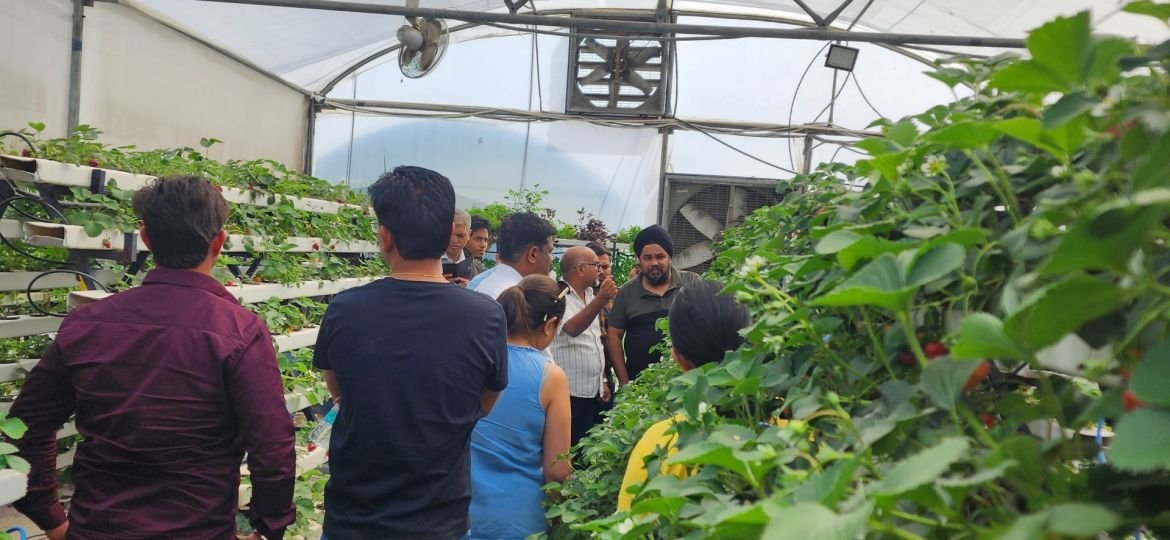
How to Start Hydroponics Farming in India
Introduction
Hydroponics farming is a modern agricultural technique that involves growing plants without soil, using mineral nutrient solutions in water. This method is gaining popularity in India due to its efficiency, sustainability, and potential for higher yields. Here’s a comprehensive guide to help you start hydroponics farming in India.
Step-by-Step Guide to Starting Hydroponics Farming
- Gain Knowledge and Training
- Greenhouse Setup
- Types of Greenhouses:
- Naturally Ventilated Greenhouse: Utilizes natural ventilation to maintain temperature, humidity, and CO2 levels.
- Climate-Controlled Greenhouse (Fan & Pad Polyhouses): Uses micro-irrigation techniques for temperature and humidity control.
- Considerations for Greenhouse Setup:
- Location: Choose a site with adequate sunlight, good water drainage, and easy access.
- Structure: Select a durable and suitable frame material, such as galvanized steel or aluminum.
- Covering Material: Use high-quality polyethylene or polycarbonate sheets.
- Ventilation: Ensure proper ventilation to regulate temperature and humidity.
- Irrigation System: Install an efficient irrigation system tailored to your hydroponics setup.
- Choose the Right Hydroponics System
- Nutrient Film Technique (NFT): Ideal for leafy greens and herbs.
- Deep Water Culture (DWC): Suitable for fast-growing plants.
- Drip System: Versatile and suitable for a variety of plants.
- Wick System: Simple and inexpensive, ideal for beginners.
- Ebb and Flow (Flood and Drain): Good for larger plants and vegetables.
- Aeroponics: Advanced system for high yield and efficient water use.
- Select a Suitable Location
- Space: Ensure you have enough space for your hydroponics system and future expansion.
- Light: Adequate natural light is essential for plant growth.
- Water Supply: Access to a clean and reliable water source.
- Ventilation: Good airflow to maintain optimal humidity and temperature levels.
- Power Supply: Reliable electricity for pumps, lights, and other equipment.
- Select the Right Crops
- Leafy Greens: Lettuce, spinach, kale.
- Herbs: Basil, mint, cilantro.
- Vegetables: Tomatoes, cucumbers, peppers.
- Berries: Strawberries.
- Set Up Your Hydroponics System
- Build or Purchase the System: You can either build a DIY hydroponics system or purchase a ready-made kit.
- Set Up Nutrient Delivery: Ensure the nutrient solution is correctly mixed and delivered to the plants.
- Monitor Environment: Use sensors to monitor pH, nutrient levels, temperature, and humidity.
- Plant and Nurture Your Crops
- Germinate Seeds: Start seeds in a growing medium like rockwool or coconut coir.
- Transplant Seedlings: Once seedlings are established, transplant them into the hydroponics system.
- Maintain the System: Regularly check and adjust nutrient levels, pH, and environmental conditions.
- Implement Pest and Disease Management
- Harvest and Market Your Produce
- Harvesting: Follow best practices for harvesting each type of crop to ensure quality and freshness.
- Packaging: Package your produce attractively and hygienically.
- Marketing: Develop a marketing strategy to reach potential buyers, including restaurants, grocery stores, and local markets.

